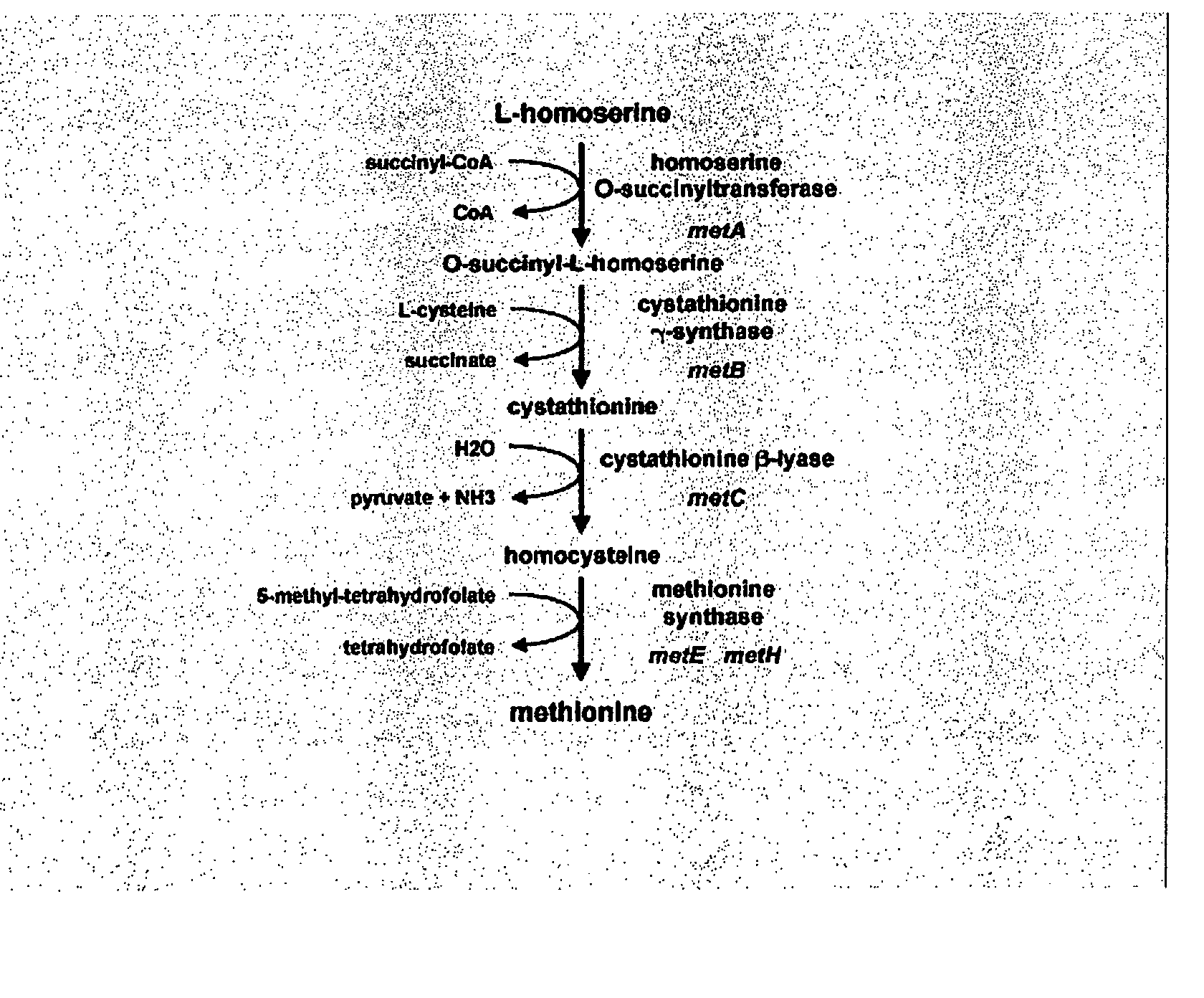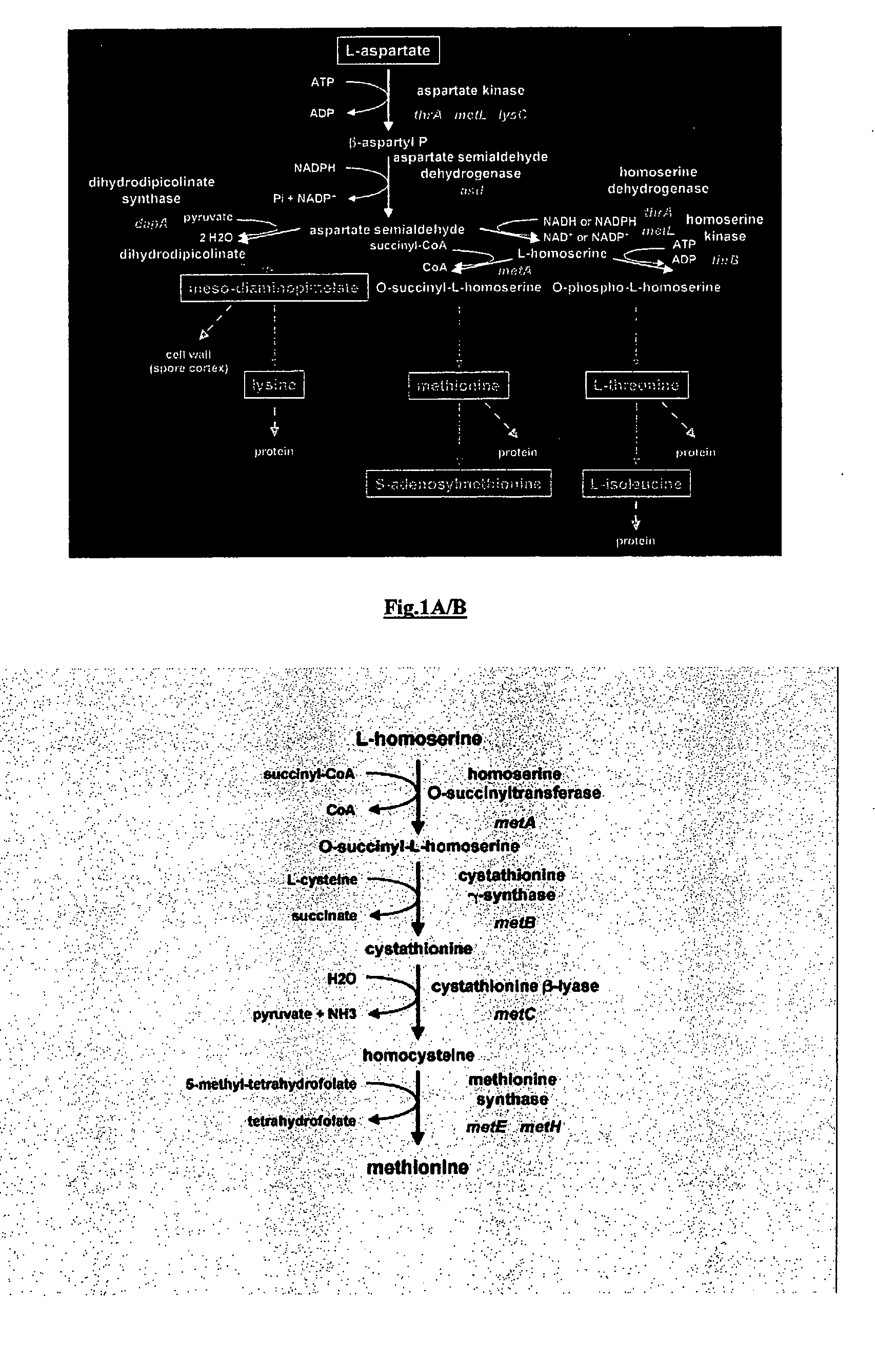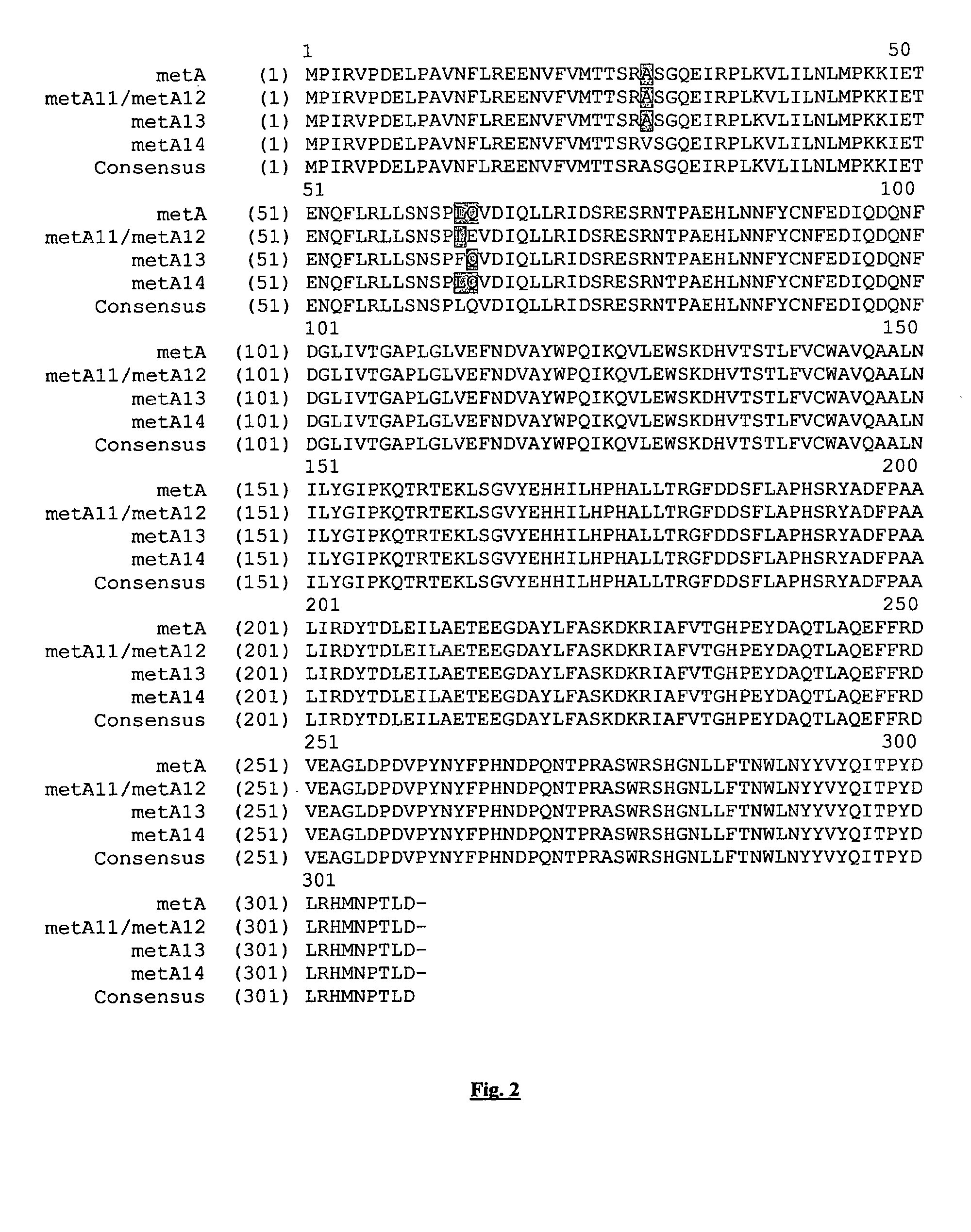Recombinant enzyme with altered feedback sensitivity
a technology of homoserine transsuccinylase and feedback sensitivity, which is applied in the direction of enzymes, sugar derivatives, biochemistry apparatus and processes, etc., can solve the problems of increasing production costs, unable to detect, and not performing as well as pure l-methionine,
- Summary
- Abstract
- Description
- Claims
- Application Information
AI Technical Summary
Benefits of technology
Problems solved by technology
Method used
Image
Examples
example 1
Isolation of E. coli Mutants Containing Homoserine Transsuccinylase Enzymes which Show Decreased Feedback-Sensitivity Towards Methionine and S-Adenosylmethionine
[0151]Isolation of E. coli Strains Growing on α-Methylmethionine
[0152]α-methylmethionine is a growth-inhibitory analogue of methionine producing an immediate effect on the growth rate of E. coli at very low concentrations (minimal inhibitory concentration of 1 μg / ml and minimal concentration for a maximal inhibition 5 μg / ml, Rowbury et al., 1968). Analogues can mimic methionine in the feedback inhibition of homoserine transsuccinylase and interfere with protein synthesis without being metabolized. Only mutant strains are able to grow in a medium containing the analogue.
[0153]E. coli was routinely grown aerobically at 37° C. in LB supplemented when needed with the appropriate antibiotic. The medium used for the α-methyl-methionine analogue resistant was a minimal medium containing (per liter): K2HPO4 8 g, Na2HPO4 2 g, (NH4)2S...
example 2
Isolation of E. coli Mutants Containing S-Adenosylmethionine Synthetase Enzymes with Reduced Activity
[0163]Isolation of E. coli Strains Growing on Norleucine
[0164]Norleucine is a growth-inhibitory analogue of methionine. At higher concentrations (50 mg / l) only mutant strains are able to grow in a medium containing the analogue. Most of these mutations map to the metK and metJ loci.
[0165]E. coli was routinely grown aerobically at 37° C. in LB supplemented when needed with the appropriate antibiotic. The medium used for the norleucine analogue resistant was a minimal medium containing (per liter): K2HPO4 8 g, Na2HPO4 2 g, (NH4)2SO4 0.75 g, (NH4)2HPO4 8 g, NH4Cl 0.13 g, citric acid 6.55 g, MgSO4 2.05 g, CaCl2 40 mg; FeSO4 40 mg, MnSO4 20 mg, CoCl2 8 mg, ZnSO4 4 mg, (NH4)2Mo2O7 2.8 mg, CuCl2 2 mg, H3BO3 1 mg. The pH was adjusted to 6.7 and the medium sterilized. Before use, glucose 10 g / l and thiamine 10 mg / l were added.
[0166]1*108 cells / ml from an overnight culture in minimal medium of...
example 3
Construction of E. coli Strains for the Production of O-Succinylhomoserine or Methionine by Overexpressing Altered Homoserine Transsuccinylase and Other Enzymes of the Methionine Biosynthesis Pathway
[0175]For the construction of E. coli strains that allow the production of O-succinylhomoserine, a plasmid overexpressing the metL gene, coding for homoserine dehydrogenase and aspartokinase was introduced into strains harboring different alleles of metA. The plasmid overexpressing metL was constructed as follows:
[0176]The following two oligonucleotides were used:
MetLF with 32 bases (SEQ ID NO 7):TATTCatgagtgtgattgcgcaggcaggggcg
[0177]with
[0178]a region (lower case) homologous to the sequence (4127415 to 4127441) of the gene metL (sequence 4127415 to 4129847, reference sequence on the website http: / / genolist.pasteiur.fr / Colibri / ).
[0179]a region (upper case) that together with the sequence pertaining to metL forms a restriction site for the enzyme BspHI (underlined),
MetBLAR with 38 bases (...
PUM
| Property | Measurement | Unit |
|---|---|---|
| Molar density | aaaaa | aaaaa |
| Molar density | aaaaa | aaaaa |
| Molar density | aaaaa | aaaaa |
Abstract
Description
Claims
Application Information
 Login to View More
Login to View More - R&D
- Intellectual Property
- Life Sciences
- Materials
- Tech Scout
- Unparalleled Data Quality
- Higher Quality Content
- 60% Fewer Hallucinations
Browse by: Latest US Patents, China's latest patents, Technical Efficacy Thesaurus, Application Domain, Technology Topic, Popular Technical Reports.
© 2025 PatSnap. All rights reserved.Legal|Privacy policy|Modern Slavery Act Transparency Statement|Sitemap|About US| Contact US: help@patsnap.com



